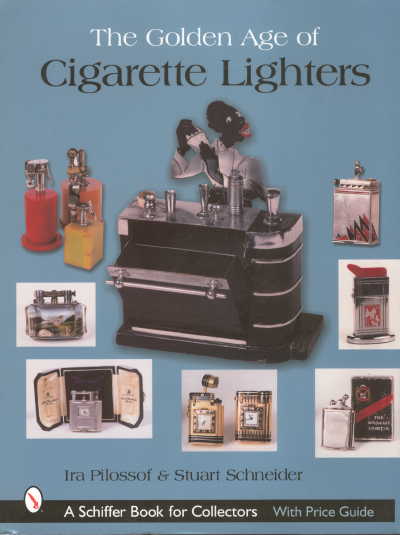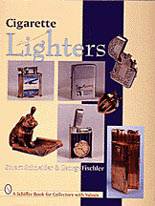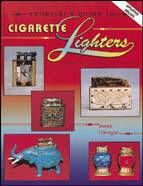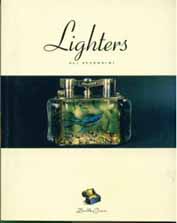A Bit Of History
"A lighter is the epitome of a great
idea, designed brilliantly and executed with the highest level of precision
engineering,"
says Richard Ball, a London-based dealer and the founder of the 220-member
nonprofit Lighter Club of Great Britain.
The earliest lighters were tinder pistols,
invented in the mid-seventeenth century, shortly after the first flintlock
firearms were made. Resourceful gunsmiths began recycling broken pistols,
using the barrel to store tinder rather than
gunpowder. The trigger released a mechanism that struck a piece of iron
and directed the sparks onto the tinder, which
would ignite. Table tinder pistols were often combined with candlesticks,
clocks and inkwells, while pocket models were
designed to be carried like a weapon.
In 1823, German chemist Johann Wolfgang
Döbereiner created a table lighter that used hydrogen gas to produce
a flame.
But Döbereiner's lamps, though convenient, were apt to explode. The
solution arrived about 60 years later with the fusee, an early
version of the wick lighter. A steel wheel struck a flint, producing sparks
that ignited the fusee (a piece of cord submerged in fuel).
In 1903, Austrian chemist Carl Auer von
Welsbach combined iron and cerium to create "Auer metal," which
essentially became
the small flint still used in lighters today. Welsbach's invention made
lighters more efficient, safer and ultimately more popular
--one flick of a finger produced a spark.
"Twentieth-century petrol lighters
can be divided among the manual, semiautomatic and automatic models,"
Dutch lighter
expert Ad van Weert writes in his book, The Legend of the Lighter (Abbeville
Press, New York, 1995, $45). Manuals are striker
lighters in which a flint is attached to part of the instrument. The body
contains a steel rod enclosing a wick soaked in petrol.
By striking the steel rod on the flint, a series of sparks ignites the
wick. On semiautomatic models, the cover automatically rises
when the turnwheel is triggered (or, in some models, lifting the cover
activates the flint wheel). In either case, the cover has
to be closed manually to extinguish the flame. The automatic, or "one-motion,"
lighter requires the use of just one
hand and one finger. Ronson founder Louis V. Aronson achieved this in 1926
when he invented his Banjo model.
His "Push, it's lit; release, it's out" slogan said it all.
Soon thereafter, nearly everyone had a
lighter, and large numbers of these early models have survived.
Zippo, the most popular brand among collectors, has produced some 300 million
lighters since the company's
inception in 1932. Every Zippo is guaranteed for life; and they're all
collectible.
... about collecting lighters ...
Both rarity and unusual mechanical design
affect the value of a lighter. Rarity is a function of the number produced,
and the
number that have survived. It is not necessarily related to age; some rare
pieces are not old. (They may have been custom-made or
produced recently but in limited quantities.) Table lighters are rarer
than pockets (and generally more valuable); approximately
seven table models were produced for every thousand of the pocket variety.
Still, the market value of a lighter depends
in part on its age. A specimen that is especially characteristic of a particular
period, such as
an Art Deco enamel, assumes a greater value. Another important consideration
is the materials used to make a lighter, with precious
metals or enamels commanding higher prices. A built-in secondary function
(such as a lighter that doubles as a pocket knife
or humidor) makes a piece more precious; timepieces and jewels are further
price boosters.
Makers are also significant, with Dunhill
and Cartier topping the list. Ronson (known in its early days as Art Metal
Works)
and Evans are the principal American brands, with Zippo in a category by
itself. The Austrian IMCO, British Colibri, French Dupont and
Van Cleef & Arpels, Swiss Thorens and La Nationale, and Italian Saffo
hallmarks are all highly regarded. After World War II, numerous
Japanese companies reproduced all sorts of gimcracks containing concealed
lighters. Stamped "MIOJ" (Made in Occupied Japan)
as required by law, lighter designs ranged from Wurlitzers to sewing machines
to motor cars.
Alfred Dunhill Ltd. fancies its lighters
the Rolls Royces of the trade. Alfred Dunhill, the London-based company's
founder, established
a dictum that stated "It must be beautiful, it must be the best of
its kind, and it must last." British royals, Winston Churchill,
maharajas and other foreign dignitaries are among the customers listed
in shop registers past and present.
Another highly sought Dunhill is a 1938 boar's tusk table lighter pictured
in the company's catalogue for that year,
thought to be a one-of-a-kind item or a very limited edition. No Tusk has
been found to date, yet Dunhill
collectors continue to look, convinced one may eventually turn up in India.
It is not known just how many of the Tusk and some other Dunhill models
were produced, because World War II bombings of
London destroyed many of Dunhill's records. What survived is stored in
the company's London Archives Collection,
including more than 1,200 lighters, advertisements, photographs and catalogues.
Most lighters do remain on the shelf,
unused by owners who hanker after only those in the best condition. Because
condition generally
influences the value of any collectible, a piece found in its original
package, unopened, is worth about 30 to 50 percent more.
The sturdier the stuff it's made of, the better its chances for surviving
intact and remaining in good condition; so lighters made of
fragile materials, like glass, are more valuable since they have a lower
survival rate. The Massachusetts-based Evans
company made a series of lighters with fruit- and egg-shaped enameled cases,
that fit into this category.
Hand-painted or enameled in the Fabergé style, these strawberries,
apples, pears, pineapples, acorns and eggs
were produced between 1948 and 1959.
Guns and lighters are a frequent match.
Fundamental gear for soldiers and sailors in both world wars, lighters
provided flames
for illumination, rescue beacons, ignition of fires for cooking and warmth
and not incidentally, lighting up. Due to frequent dampness,
matches were often useless. This is one of the explanations for the proliferation
of "trench-art" lighters. These were makeshift models said
to have been crafted during the infamous trench warfare of World War I.
Cartridge cases, bullets, helmets, coins and other front-line debris
were assembled to create rudimentary mechanisms that were highly inventive
in design. Trench-art is itself a category of collectibles.
During World War II, both Zippo and Ronson
"went to war." Ronson contributed metal hinges used on a particular
torpedo bomber,
and Zippo sent lighters. The Zippo form has remained virtually unchanged
(except for a quarter-inch height reduction)
since it first appeared in 1932. The standard chrome cases were made memorable
by soldiers who engraved words, recorded
itineraries and attached badges and souvenirs to them, customizing their
Zippos and providing tidbits of military
history as well. The company capitalized on the glowing battlefield reports
in postwar advertising campaigns.
A 1961 ad picturing a battle-scarred lighter stated, "Ernie Pyle scratched
his shortest war story on this Zippo lighter in 1945. It still works today."
Here
are some great books about collecting cigarette lighters available on the
market (check e-bay):
.
|
|
The Golden Age of
Cigarette Lighters
By Stuart Schneider & Ira
Pilossof
Size: 8.5"x11" - 186 pages
Binding Type: Hard Cover
The book contains over 1,000 color
photographs with
descriptions and values, and the lighters are listed
alphabetically within country of manufacture. Meticulous
about historical details, and the quality of photos. At the
back of the book is a comprehensive glossary containing
nearly 150 terms and abbreviations lighter collectors
should find most helpful.
|
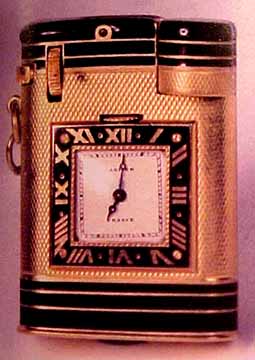 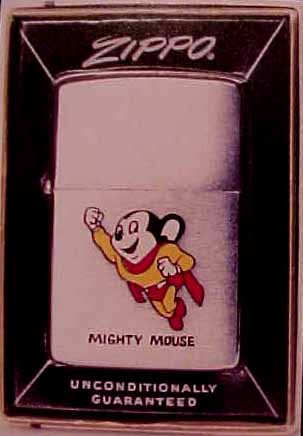 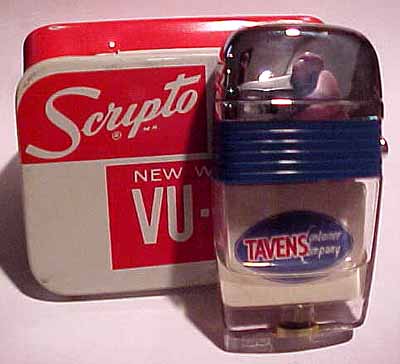
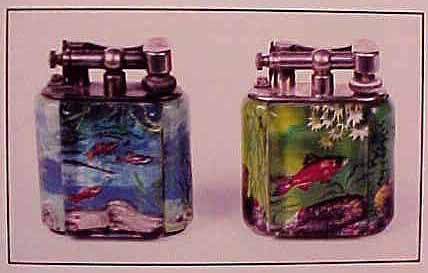
|
|
|
Collecting Cigarette Lighters
By: Stuart Schneider & George
Fischler
Size: 8"x11" inches -
196 pages
Binding Type: Hard Bound
Priced Pictures - Indexed, Color Photos,
Over 500 lighters are illustrated in full color. Shown in
alphabetical order of their makers and by date within
each company. The available historical data is presented.
Lighters include examples from well-known companies
like Dunhill, Ronson and Zippo as well as companies
whose names are lost in smoke.
|
|
|
|
Collecting Cigarette Lighters
Vol II
A Price Guide
(1995 VALUES)
by Neil S. Wood
Size: 8.5" x 11"
inches - 146 pages
Binding Type: Soft Cover
The additional guide to the original
Collecting Cigarette
Lighters- A Price Guide is the perfect companion to the
serious collector of smoking paraphernalia. Altogether
different contents from Volume I, this volume provides a
broader view of the lighter realm. The major producers as
listed for the first volume are included, as well as a generous
selection of lesser known manufacturers.
Entirely in full color.
|
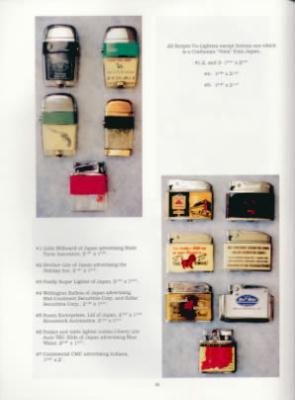 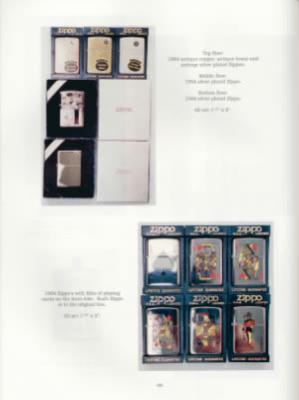 |
|
|
The Handbook of Vintage Cigarette
Lighters
With Price Guide
(1999 VALUES)
By Stuart Schneider & Ira
Pilossof
6" x 9" inches - 176 pages
Binding Type: Soft Cover
This convenient, hand held guide
introduces a history of lighters
through a comprehensive, alphabetical presentation of styles,
organized according to company name and dating from the late
1800s through the 1980s. In an effort to appeal to new collectors,
well-known makers such as Dunhill, Ronson, Evans, Scripto, and
Zippo are included, as well as unusual and interesting lighters
from smaller and lesser known companies.
|
|
|
|
Collector's Guide to Cigarette
Lighters
(1998 VALUES)
By: James Flanagan
Size: 8.5"11" inches -
128 pages
Binding Type: Soft Cover
This full-color collectors guide
has hundreds of photographs -
complete descriptions. Chapters include: Advertising, Art
Deco, Guns and military, Novelty, Cheesecake, Animals,
Occupied Japan, Pocket and Table lighters - and even a section
called the Ordinary. There is a gallery of vintage cigarette and
lighter advertisements which includes one featuring a doctor
recommending his favorite brand!
|
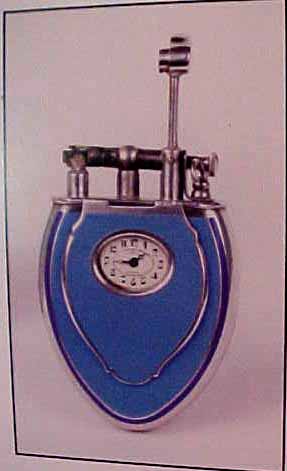 |
|
|
Collector's Guide to Cigarette
Lighters - Book 2
INDENTIFICATION AND VALUES
(1999 VALUES)
By: James Flanagan
Size: 8.5"11" inches -
Binding Type: Soft Cover
Collectors are uncovering lighters
of every shape, size, and form.
This new full-color collector's guide has hundreds of photos,
complete descriptions and vintage ads. Chapters include advertising,
Art Deco, guns and military, novelty, cheesecake, animals, Occupied
Japan, pocket and table lighters,
|
|
|
|
Lighters
Gli Accendini
By: Stefano Bisconcini
Size: 8.5"11" inches -
142 pages
Binding Type: Soft Cover
Published by: Chronicle Books, San Francisco, CA - 1991
This interesting volume pictures
lighters from years gone by
when such companies as Dunhill, Carrier and Zippo were
artisans, creating lighters of the best quality and design.
The final pages are a history. This is a great reference if you
collect cigarette lighters.
|
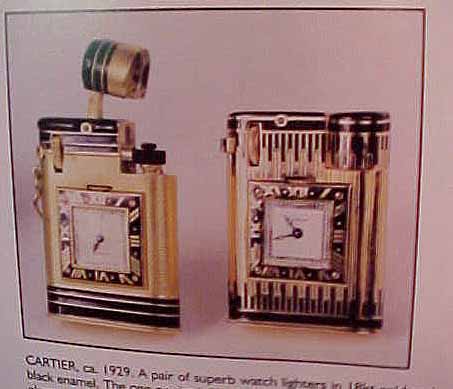
|
Back
to Welcome Page

